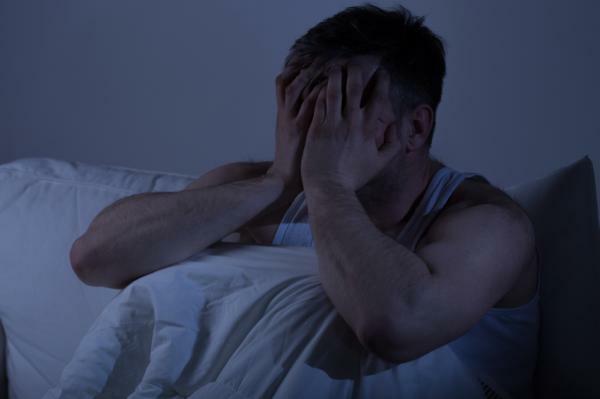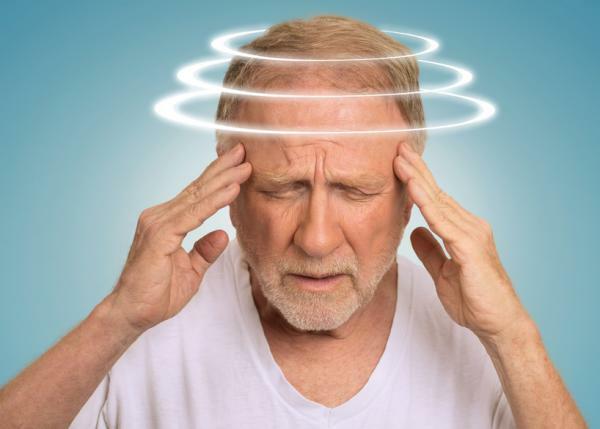
Within the people who suffer Anxiety disorders, the "Social Phobia" is one of the most frequent pictures, as well as dangerous: for being almost always (in 80%) accompanied by another picture; like Alcoholism - Drug Addiction - Depression - Agoraphobias, and others. For example: Many people often choose to drink alcohol to face a fear. This is seen with great frequency among teenagers. In this Psychology-Online article we are going to discover the causes, symptoms and treatment of social phobias so you know how to deal with this condition.
Index
- Anxiety disorders and social phobia
- Causes of social phobia
- The most frequent fears that people with social phobia suffer
- Treatment of social phobia
- Other points to be worked on in therapy
- Treatment oriented to social phobia
- Example of treatment of social phobia
- Issues to consider
Anxiety disorders and social phobia.
Now, let's remember: what does it mean to “have an Anxiety Disorder? People who suffer from Anxiety Disorders, present an exaggerated anxiety response to situations or stimuli than to others people would be totally "normal", leading them to avoid the feared object or situation or to develop a "panic attack" at that point. exposition
P.Ej: in the "Social Phobias", most likely this person does not attend meetings because they feel that in the environment there is a great attention placed on his person (which may or may not be real), which undoubtedly includes all negative judgments about his Act. Because of this, he will suffer intense fear (anxiety and anguish) that have no direct relationship with the situation he experienced (with what they really think of him in that meeting); thus developing a "Panic Attack" ...
Panic Attack: "It is the temporary and isolated appearance of intense fear, which can last a few minutes (of great intensity), and is accompanied by a series of physical and emotional symptoms ...
Symptoms of anxiety disorders
The symptoms:
- Palpitations,
- Tachycardia,
- Sweating,
- Shaking or shaking
- Feeling of choking or shortness of breath
- Chest tightness,
- Sickness,
- Dizziness, unsteadiness, fainting
- Chills, hot flushes,
- Fear of losing control - Fear of dying or Fear of going crazy ...

Causes of social phobia.
In Social Phobia, and in all Anxiety Disorders in general, these last three are the underlying fears of all pathological manifestation of anxiety. Unconsciously the person suffers from a strong fear of dying, going crazy or losing control in some way (many times this has its origin in certain traumatic events that the person has lived, in general, of a sudden nature, and that has impacted him emotionally.
- This fear arises suddenly and disorganizes the personality.
- Severely alters their quality of life: (Social, work, family and bond in general);
- It causes alterations and damages in the individual's own capacities.
Having the necessary basis to know what we mean when we say that someone suffers from Disorders of Anxiety, we are going to specify the box of "Social Phobia", which is the one that we will refer to in this chance.
In "Social Phobia" the person he feels an intense fear of submitting to public situations, where he receives some kind of evaluation (or he feels that he receives it), or judgment, for being very embarrassing... This happens because he also thinks that this situation would undoubtedly lead him to feel humiliated and devalued by others. As can be seen, the person fears the "critical gaze" of the other.
Due to these thoughts, his anxiety increases so significantly, which is why he develops the "Panic Attack" that we described. previously (with all or some of the physical manifestations that accompany it, and with a duration and number of episodes, variable according to each subject).
The most frequent fears that people with social phobia suffer.
The most frequent fears are:
- Fear of public speaking;
- Oral tests;
- Interacting with strangers;
- Initiate affective relationships;
- Eating / Drinking in public;
- Work when they observe you;
- Go to social gatherings;
- Interact in a group; etc.
All these situations would be reflecting a common denominator, given by:
- Fear of making a fool of yourself or feeling ashamed ”;
- Fear of being evaluated by other people ”; Y
- Fear of being the center of attention ”.
Finally, fear is of rejection, of criticism (if we analyze the situation, people with social phobia project on others an alleged negative criticism or rejection, which they actually have with themselves before exposing themselves to any situation.
It is they that are not accepted in the first instance. Then it will be necessary to evaluate in each particular life history what have been the events or factors that led to that lack of confidence with himself). We will see the Treatment later.
It is important to consider that although it is a highly disabling pathology by the deterioration it causes in personal-work-social relations, etc., and by the degree of isolation that one suffers; We also have to say that it is possible for the person to achieve a good recovery through proper Diagnosis and Treatment.

Treatment of social phobia.
The Treatment will have different characteristics (according to each particular case), but with a common objective: which is achieve that the person can join a "Therapeutic Group" to overcome this fear of group integration... with the secondary benefit of knowing that there are also many others who suffer (in silence) the same as him, and identify and enrich themselves with the experiences of others (being one of the purposes of the Therapies and dynamics Groups).
I believe that in some cases a approach in individual sessions in order to delve into the origins of that particular phobia (this will be different in each story, and in the experiences that each individual has had of the world throughout their lives). In any case, the inclusion of a "Therapeutic Group" will be one of the most valuable tools to work with.
As in any group, there are "identifications" with the stories and stories of other people and that will be a very rich factor to help each of the patients to demystify that "that only happens to them ...", so that each one can use tools that will facilitate other people of how each one is overcoming the feared situations of exposition…
Finally, in some cases (to be evaluated) it will be supplemented with specific medication, where it will work together with the Psychiatrist in addressing the pathology. At this point in particular, I consider that any patient who can come to the consultation and have a "Containment Network" (family, friends, partner, etc.) to help you start your treatment, I would choose to use the medication as a resource for use only if it is unavoidable. In this way, the patient will learn to trust "his resources" and not on medication as the necessary element for him to take action ...
Other points that must be worked on in therapy.
On the other hand, I am going to list some of the most important points to work within the Treatment of patients with social phobia.
Here again are some guidelines and exercises to consider, that we can apply both in patients suffering from this condition, as with any other anxiety disorder, since what finally we will be "exercising" and helping to control the person will be the common manifestation of all anxiety Charts, which is the "Attack of Panic".
Before it is worth clarifying that several years ago, when this pathology was not yet so diagnosed by doctors, and due to the wide physical symptoms that it possesses, many patients feared they were suffering from Heart Attacks, or any other organic disease more severe. It was even very common that instead of consulting with the Psychologist or Psychiatrist, the visits were to the consultation of Cardiologists, Gastroenterologists or Doctors of the digestive system, Dermatologists, etc.
Over the years, and also the changes in the quality of life, have unfortunately made it one of the pathologies in the world with the highest social incidence. But something positive to note is that these are usually pictures with a good prognosis in treatments (except in pictures where there are comorbidity between a T.O.C. (Obsessive Compulsive Disorder), and a Depressive Picture, being the most complicated for try).
Focusing again on Social Phobias, I will mention below some points to keep in mind, in patients with said pathology.

Treatment oriented to social phobia.
For an anxiety disorder to be generated, two things have to happen:
- That the person evaluates a situation that is not dangerous as dangerous;
- That he feels that he does not have the resources to face her when, in fact, he has them.
Let's remember the "Most feared situations":
- Public speaking,
- Interact in small groups,
- Parties or social gatherings,
- Talk to people of authority,
- Go to urinate in a public toilet,
- Eating or drinking in public places,
- Exam situations (more oral)
Frequent Thoughts:
- "I'm going to act like a fool,"
- "I'm going to babble or talk nonsense",
- "I'm boring",
- "What I have to say is not going to interest anyone",
- "I am uninteresting or attractive",
- "Everyone will notice that I am nervous and they will make fun of me"
Worry:
- About the performance of him,
- Due to the possibility that others detect his symptoms,
The symptom more frequent are:
- Palpitations,
- Shaking,
- Sweating,
- Gastrointestinal discomfort,
- Muscle tension,
- Facial blush, etc.
Attention dysfunction:
- Body hypervigilance,
- Self-observation, constant concern about their image and what it can generate in the other,
Pathologically anxious people perceive themselves uncontrollably (hence the greatest fear is of losing control of themselves, and may even lead to madness or death)... They are fears not almost always unconscious.
Signs of Social Threat:
- Light level,
- Let the others be seated
- If you are going to dance,
- If there are going to be girls, pretty or handsome,
- What topics are going to be discussed,
- Age of the people attending the event,
- Duration of the event, etc.
Underlying Beliefs:
- Social situations are dangerous ...
- Any question related to the social must be perfect ...
- It lacks conditions ...
Predictions:
- Shame,
- Humiliation,
- Rejection,
- Not be considered or taken into account,
Example of treatment of social phobia.
1st Individual Stage: “Therapist as a representative of the social context.
Observer-participant role ”:
- Attention to one's own feelings to generate therapeutic hypotheses in the interaction;
- Avoid perpetuating the dysfunctional interpersonal cycle and confirm its scheme;
- Work in the "Here and now", fostering learning based on concrete experience rather than on an abstract intellectual exercise;
Core Guidelines "Individual Treatment"
- Psycho-education,
- Respiratory retraining (Breathing and Relaxation Exercises),
- Refocusing of attention,
- Cognitive restructuring,
- Behavioral tasks to perform as a “duty” (commitment to your treatment outside of the session),
- Cognitive tasks to be carried out as "duty" (Idem).
Work with Cognitive Restructuring:
- Psycho-education techniques,
- Help with anxiety levels,
- Fundamental the “Anticipatory Anxiety” (A.A.)… Anxiety that anticipates the anxiety of “knowing (supposing) what is going to happen,
- Help discriminate and differentiate feelings from thoughts,
- Self-reports (which is important to do, to see the evolution),
List of Cognitive distortions:
- Extreme thinking (all / nothing)… help you create “grays”,
- Over-generalization (for a given situation, the whole scene is encompassed),
- Disqualification of the positive (minimizes the positive),
- Read the mind ("guess what the other thinks, or what will happen"),
- Predict the facts,
- Emotional reasoning,
- Central guidelines of "Group Treatment"
Techniques:
- Dramatization,
- Typical life situations,
- Role reversal,
- Double techniques,
- Soliloquy,
- Back to back,
- Image construction, etc.
Any proposal must contemplate a gradual and progressive approach that allows us to work on the dysfunctional structures at stake.
Create realistic situations so that the patient can face them.
Issues to consider.
Before conducting a role play you have to take into account the following:
- Select the situation,
- Assemble the context,
- Take into account that other patients will participate,
- Role to be played by the Auxiliary-Professional,
- What triggers of anxiety will I use,
- Wow factor.
Prior to the exhibition:
- Generate the "movie" in the head,
- Purpose of the dramatization,
- Identify the cognitive distortions that are going to be worked on.
During the exhibition:
- Interrupt to identify the dysfunctional process that hinders the patient's performance,
- The situation is continued or re-enacted.
This was an approach to this pathology so frequent in our times and in many different cultures... But we must not forget that ...
“If you are afraid, take action... the only way to start fighting fear is action ”.
This article is merely informative, in Psychology-Online we do not have the power to make a diagnosis or recommend a treatment. We invite you to go to a psychologist to treat your particular case.
If you want to read more articles similar to Social phobias: causes, symptoms and treatment, we recommend that you enter our category of Clinical psychology.


